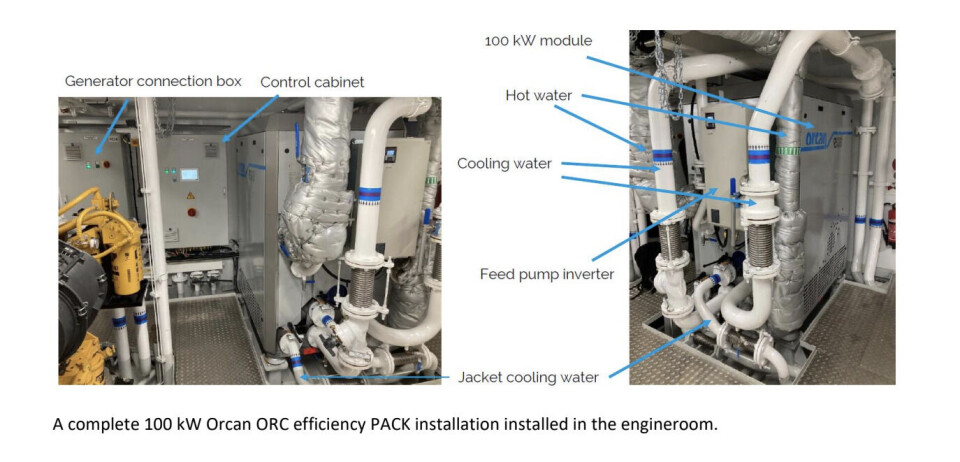Annonsørinnhold:

Decarbonizing shipping – by power generation from waste heat
Waste heat recovery is a key lever when it comes to energy efficiency. In the shipping industry alone, there is a recoverable waste heat potential of more than 100 TWhth 1
The fuel efficiency of a ship’s engine is only about 40-55% on average. During the conversion of chemical energy to propeller thrust, a major part of the fuel’s energy is lost as waste heat.

Unless you can use it for heating consumers on board the vessel the excess heat can either be emitted into the environment, or it can be converted into emission-free electricity.
Harvesting the unused waste heat from ships’ engines or fuel cells and converting it into power is key to enhance fuel and energy efficiency.
This also contributes to reducing the carbon footprint of traded goods carried over the oceans. Waste heat recovery using an Organic Rankine Cycle (ORC) is suitable for large, medium and even small ships.

The Orcan efficiency PACK
The Orcan efficiency PACK is a modular system for generating power from waste heat on the basis of ORC technology principle.
Economic, regulatory and ecological benefits of ORC heat-to-power technology
• Significant ongoing fuel savings, increased overall energy efficiency
• Significant carbon footprint and hazardous emissions reductions
• Earn-back investment model: attractive Net Present Value (NPV) and Internal Rate of Return (IRR) • Accumulated free cash flow positive from day 1, return on investment between 2 and 4 years • Improved compliance with the regulatory requirements: EEDI, EEXI, CII
• Significantly reduced carbon tax or certificate costs (EU-ETS scheme) and eventually IMO payments • Operability with all types of fuels, improved business case for sustainable fuels
• Robustness for high harsh on-board conditions
Compact and flexible
The most important features of onboard heat-to-power technology Compactness is of paramount importance.
Engine rooms in ships are tight in terms of available floor space, especially on smaller vessel sizes. That is why special attention needs to be given to achieving minimal dimensions of the modules.

1 According to a market study by McKinsey: https://www.mckinsey.com/capabilities/sustainability/our-insights/waste-not-unlocking-the-potential-of-waste-heat-recovery.